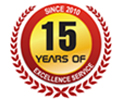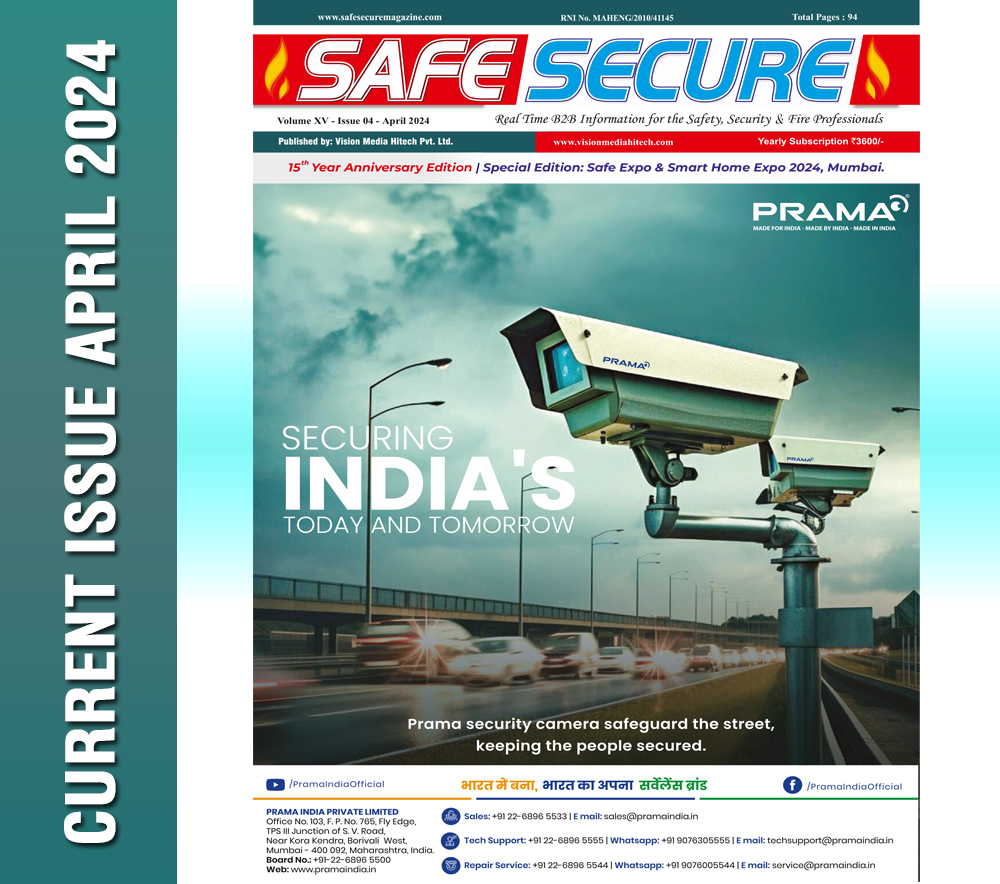Environmental Management System ISO 14001: 2015 - Effective way to Sustainable Business.

Bajirao B. Dethe, Safety Professional, Chemical & PSM Expert.
Post Graduate in Organic Chemistry from Mumbai University, Certified Safety Professional in Industrial Safety, from CLI (Govt. of India), PG Diploma in Fire Safety Engineering, Lead Auditor For ISO 45001 and ISO 14001. Certified in Process Safety Management by NEBOSH, UK. About 28 year's experience in various Chemical, Pharma and Engineering Industries.
ABSTRACT:
An environmental management system (ISO 14001:2015) helps organizations to identify, manage, monitor and control their environmental issues in a holistic manner. Like other ISO management systems, it uses a High-Level Structure. This means it can be integrated easily into any existing ISO management system. It also includes the need for continual improvement of an organization's systems and approach to environmental concerns. Environmental Management System became an effective way to business sustainability.
An environmental management system brings together the people, policies, plans, review mechanisms, and procedures used to manage environmental issues at a facility or in an organization. Environmental Management standards are reviewed and revised regularly to make sure they remain relevant to the marketplace. ISO 14001:2015 responds to the latest trends, including the increasing recognition by companies of the need to factor in both external and internal elements that influence their environmental impact, such as climate volatility and the competitive context in which they work. The changes also ensure that the standard is compatible with other management system standards. Organizations using ISO 14001 have found success across a range of areas, including reduced energy and water consumption, a more systematic approach to legal compliance and an improved overall environmental performance.
This article talks about the new revision of Environmental Management System i.e. ISO 14001:2015, its elements and benefits to an organization or business.
Key Words
Environmental management system, ISO14001, Environment Aspects, Life Cycle, Leadership, Planning and Environment management programme. Introduction
We all have an impact on the environment by the mere act of living from day-to-day. An EMS, in its simplest form, asks us to control our activities so that any environmental impacts are minimized. However unstructured approach may lead us to improve in the wrong direction or, indeed, may leave us without any clear direction at all. It is tempting to control and minimize those impacts we feel we can tackle easily. Our attitude towards environmental issues is influenced by a topical environmental event, and therefore, we can be influenced to act without thoroughly understanding environmental impacts which are far more significant and require more considered thought processes. A structured approach need to be taken by the organization by implementing Environmental Management System Standard.
The International Organization of Standardization (ISO) defines an environmental management system as “part of the management system used to manage environmental aspects, fulfill compliance obligations, and address risks and opportunities.” It specifies requirements for an effective Environmental Management System (EMS). It provides a framework that an organization can follow, rather than establishing environmental performance requirements. The framework in the ISO 14001 standard can be used within a plan-do-check-act (PDCA) approach to continuous improvement. ISO 14001 can be integrated with standards besides ISO 9001 in order to provide synergy with other systems, such as OHSAS 18001.
ISO 14001 was first published in September 1996: ISO 14001 as an Environmental Management Standard, published by “International Organization for Standardization”. Then it is revised in 2004. However, the same is recently revised in 2015. It helps organizations improve their environmental performance through more efficient use of resources and reduction of waste, gaining a competitive advantage and the trust of stakeholders.
Key Elements of Environmental Management System (ISO 14001:2015) :
At the highest level, ISO 14001:2015 covers the following topics with regard to environmental management systems:
- 1. Context of the Organization
- 2. Leadership
- 3. Planning
- 4. Support
- 5. Operation
- 6. Performance Evaluation
- 7. Improvement
Relationship between PDCA cycle and the framework in the ISO 14001:2015
1. Context of the organization
This is a new clause that establishes the context of the EMS and how the business strategy supports this. 'Context of the organization' is the clause that underpins the rest of the standard. It gives an organization the opportunity to identify and understand the factors and parties that can affect, either positively or negatively, the EMS. Unlike the old standard, the new one expects you to understand your organization's external context and its internal context before you establish its environmental management system (EMS).This means that you need to identify and understand the external issues and the external environmental conditions that could influence your organization's EMS and the results that it intends to achieve. It also means that you need to identify and understand the internal issues and internal environmental conditions that could influence your EMS and the results in intends to achieve.
The new ISO 14001: 2015 standard also expects you to identify the interested parties that are relevant to your EMS and to identify their needs and expectations. Once you've done this, it expects you to study these needs and expectations and to figure out which ones have become compliance obligations. But why is all this necessary? It's necessary because your EMS will need to be able to manage all of these influences. Once you understand your context, you're expected to use this knowledge to help you define your EMS and the challenges it must deal with.
It has following sub-clauses:
- • Understanding the organization and its context
- • Understanding the needs and expectations of interested parties
- • Determining the scope of the Environmental management system
- • Environmental management system
2. Leadership
This clause is all about the role of "top management" which is the person or group of people who directs and controls the organization at the highest level. The purpose is to demonstrate leadership and commitment by integrating environmental management into business processes. Top management must demonstrate a greater involvement in the management system and need to establish the environmental policy, which can include commitments specific to an organization's context beyond those directly required, such as the 'protection of the environment'. There is greater focus on top management to commit to continual improvement of the EMS. Communication is key and top management have a responsibility to ensure the EMS is made available, communicated, maintained and understood by all parties. Finally, top management need to assign relevant responsibilities and authorities, highlighting two particular roles concerning EMS conformance to ISO 14001 and reporting on EMS performance.
It has following sub-clauses;
- • Leadership and commitment
- • Environmental policy
- • Organizational roles, responsibilities and authorities
3. Planning
Unlike the old standard, the new ISO 14001 standard expects you to determine risks and opportunities. So what does this mean and what does the new standard expect you to do? It expects you to start by establishing a risk planning process. It then expects you to use this process to identify risks and opportunities related to your organization's unique context, its interested parties, its compliance obligations, and its environmental aspects. It then expects you to define actions to address all of these risks and opportunities. And to make sure that these actions will actually be carried out, it asks you to make these actions an integral part of your EMS , and then to implement, control, evaluate, and review the effectiveness of these actions and these processes. While risk planning is now an integral part of the new ISO 14001 standard, it does not actually expect you to implement a formal risk management process.
It has following sub-clauses;
- • Actions to address risks and opportunities
- • Environmental objectives and planning to achieve them
4. Support
This clause is all about the execution of the plans and processes that enable an organization to meet their EMS. Simply expressed, this is a very powerful requirement covering all EMS resource needs. Organizations will need to determine the necessary competence of people doing work that, under its control, affects its environmental performance, its ability to fulfil its compliance obligations and ensure they receive the appropriate training. In addition, organizations need to ensure that all people doing work under the organization's control are aware of the environmental policy, how their work may impact this and implications of not conforming with the EMS. Finally, there are the requirements for 'documented information' which relate to the creation, updating and control of specific data.
It has following sub-clauses;
- • Resources
- • Competence
- • Awareness
- • Communication
- • Documented information
5. Operation
This clause deals with the execution of the plans and processes that enable the organization to meet their environmental objectives. There are specific requirements that relate to the control or influence exercised over outsourced processes and the requirement to consider certain operational aspects 'consistent with a life cycle perspective'. Finally, the clause also covers the procurement of products and services, as well as controls to ensure that environmental requirements relating to design, delivery, use and end-of-life treatment of an organization's products and services are considered at an appropriate stage.
It has following sub-clauses;
- • Operational planning and control
- • Emergency preparedness and response
6. Performance Evaluation
This is all about measuring and evaluating your EMS to ensure that it is effective and it helps you to continually improve. You will need to consider what should be measured, the methods employed and when data should be analysed and reported on. As a general recommendation, organizations should determine what information they need to evaluate environmental performance and effectiveness. Internal audits will need to be carried out, and there are certain "audit criteria" that are defined to ensure that the results of these audits are reported to relevant management. Finally, management reviews will need to be carried out and "documented information" must be kept as evidence.
It has following sub-clauses;
- • Monitoring, measurement, analysis and evaluation
- • Internal audit
- • Management review
7. Improvement
This clause requires organizations to determine and identify opportunities for continual improvement of the EMS. The requirement for continual improvement has been extended to ensure that the suitability and adequacy of the EMS-as well as its effectiveness are considered in the light of enhanced environmental performance. There are some actions that are required that cover handling of corrective actions. Firstly organizations need to react to the nonconformities and take action. Secondly they need to identify whether similar nonconformities exist or could potentially occur. This clause requires organizations to determine and identify opportunities for continual improvement of the EMS.
It has following sub-clauses;
- • General
- • Nonconformity and corrective action
- • Continual improvement
Key improvements in ISO 14001:2015
ISO 14001 has recently been revised in 2015, with key improvements such as:
- • The increased prominence of environmental management within the organization's strategic planning processes
- • Greater input from leadership
- • A stronger commitment to proactive initiatives that boost environmental performance
ISO 14001:2015 Focuses:
- • Environmental management to be more prominent within the organization's strategic direction
- • A greater commitment from leadership
- • The implementation of proactive initiatives to protect the environment from harm and degradation
- • On life-cycle thinking, to consider the environment from development to end-of-life
- • The addition of a stakeholder-focused communication strategy
Management of Change is an important part of maintaining the environmental management system that ensures the organization can achieve the intended outcomes of its environmental management system on an on-going basis. Management of change is addressed in various requirements in ISO 14001:2015 Standard, such as
- • maintaining the environmental management system
- • environmental aspects
- • internal communication
- • operational control
- • internal audit programme and
- • management review
As part of managing change, the organization should address planned and unplanned changes to ensure that the unintended consequences of these changes do not have a negative effect on the intended outcomes of the environmental management system. Examples of change include:
- • planned changes to products, processes, operations, equipment or facilities;
- • changes in staff or external providers, including contractors;
- • new information related to environmental aspects, environmental impacts and related technologies;
- • changes in compliance obligations.
Life cycle perspective added in the standard
Purpose: Life cycle considerations were largely ignored by the old standard. Now they're central. ISO 14001 now expects you to use a life cycle perspective to "identify the environmental aspects and associated environmental impacts of its activities, products and services that it can control and those that it can influence".
The introduction to the new standard explains that a life cycle perspective can be used to benefit the environment in areas where the organisation has "control or influence" and also "prevents environmental impacts from being unintentionally shifted elsewhere within the life cycle".
ISO 14001:2015 has introduced the requirement for a "life cycle perspective" in environmental management systems (EMS). The new standard does not require a formal life cycle analysis, or quantification, but does require organisations to look upstream and downstream of the processes performed on-site and try to reduce environmental impacts. Specifically, the life cycle perspective is related to the organisation's environmental aspects and impacts. It requires careful consideration of the life cycle stages that the organisation can control or influence, including acquisition of raw materials, production and transportation, use and maintenance, and recycling or disposal. In doing this, the organisation needs to create records as evidence that they have considered each lifecycle stage. The standard also requires the organisation to provide information to its external service providers and contractors about the potentially significant environmental impacts of its products and services. It must also consider the need to provide this information to transporters, end-users and disposal facilities. By providing this information, the organisation can potentially prevent or mitigate adverse environmental impacts during these life cycle stages.
The life cycle perspective can be applied in choosing, for example:
- • raw materials (environmental impacts of their production, distance transported and mode of transport)
- • products to manufacture and offer for sale (same considerations as well as disposal or recycling options at end-of-life)
- • services used by organisation (environmental credentials, chemicals used, waste generated)
- • equipment purchases (distance transported, options for recycling at end-of-life, waste generated in their use).
Benefits of ISO 14001:2015 to business or organization:
ISO 14001 was developed primarily to assist companies with a framework for better management control that can result in reducing their environmental impacts. In addition to improvements in performance, organizations can reap a number of economic benefits including higher conformance with legislative and regulatory requirements by adopting the ISO standard.
By minimizing the risk of regulatory and environmental liability fines and improving an organization's efficiency, benefits can include a reduction in waste, consumption of resources, and operating costs.
Secondly, as an internationally recognized standard, businesses operating in multiple locations across the globe can leverage their conformance to ISO 14001, eliminating the need for multiple registrations or certifications.
Thirdly, there has been a push in the last decade by consumers for companies to adopt better internal controls, making the incorporation of ISO 14001 a smart approach for the long-term viability of businesses. This can provide them with a competitive advantage against companies that do not adopt the standard. This in turn can have a positive impact on a company's asset value.
It can lead to improved public perceptions of the business, placing them in a better position to operate in the international marketplace .
The use of ISO 14001 can demonstrate an innovative and forward-thinking approach to customers and prospective employees.
It can increase a business's access to new customers and business partners. In some markets it can potentially reduce public liability insurance costs. It can serve to reduce trade barriers between registered businesses.
There is growing interest in including certification to ISO 14001 in tenders for public-private partnerships for infrastructure renewal.
Using ISO 14001:2015 has many benefits such as waste reduction, energy conservation, reduction in carbon foot print, Increase in leadership involvement and engagement of employees and overall improvement in environmental performance.
ISO 14001 can be used in whole or in part to help an organization (for-profit or not-for-profit) better manage its relationship with the environment.
For changing from ISO 14001:2004 to new version ISO 14001:2015, Organizations are granted a three-year transition period once the revision has been published to migrate to the new edition of the standard. After this period, if third-party certification is desired, you will have to seek certification to the new version.
Conclusions:
ISO 14001 is suitable for organizations of all types and sizes, be they private, not-for-profit or governmental. It requires that an organization considers all environmental issues relevant to its operations, such as air pollution, water and sewage issues, waste management, soil contamination, climate change mitigation and adaptation, and resource use and efficiency.
The success of an environmental management system depends on commitment from all levels and functions of the organization, led by top management. Organizations can leverage opportunities to prevent or mitigate adverse environmental impacts and enhance beneficial environmental impacts, particularly those with strategic and competitive implications. Top management can effectively address its risks and opportunities by integrating environmental management into the organization's business processes, strategic direction and decision making, aligning them with other business priorities, and incorporating environmental governance into its overall management system. Demonstration of successful implementation of this International Standard can be used to assure interested parties that an effective environmental management system is in place.
References:
- 1. International Standard ISO 14001: 2015
- 2. Website https://www.iso.org
- 3. Website https://www.bsigroup.com
(This "EXPERT TALK" Published in February 2023 Edition)












